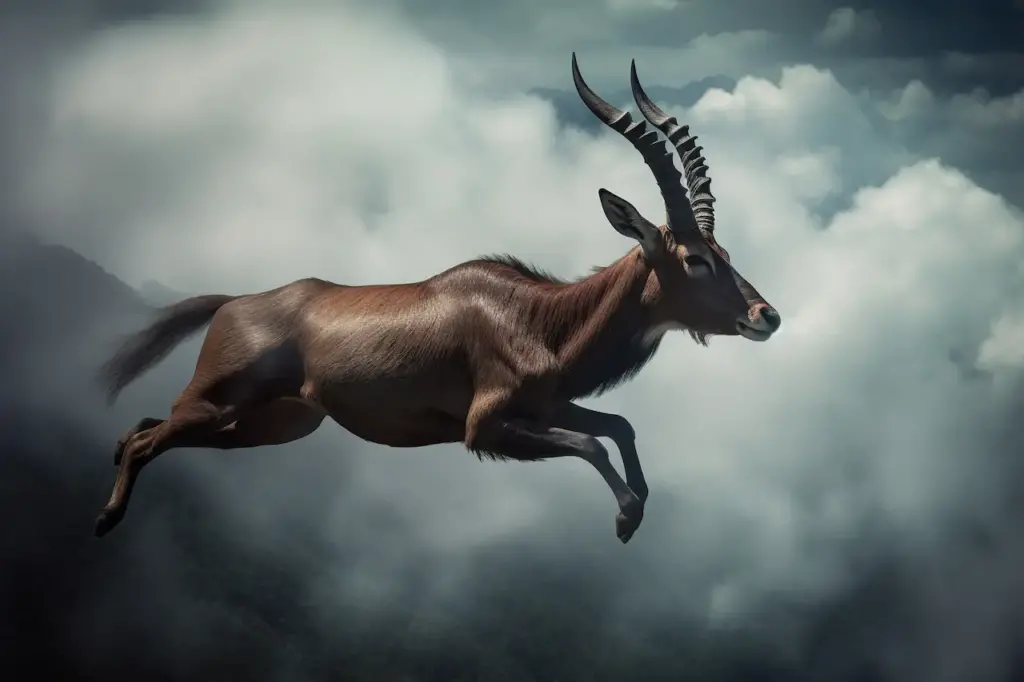The saola (pronounced sow-la) scientific name Pseudoryx nghetinhensis has been referred to as the Asian unicorn because it is so rare and seldom seen. It is also Critically Endangered, with no more than several hundred individuals remaining in several isolated areas of tropical forest stretching along the border between Vietnam and Laos.

Saola Appearance
Related to cattle but resembling an antelope, the saola—brown with white patches on its head and face and sporting a pair of straight, spindly horns—can grow to a height at the shoulders of a little over three feet (one meter), and a weight of up to 220 pounds (100 kilos).
Saolas (pronounced sow-las) can be identified by their two parallel horns, with sharpened ends. They are present on both the males and females. They are related to cattle, but look more like an antelope. Their Vietnamese name means “spindle-horns”. Saola are characterized by striking white markings and large glands at the muzzle. These could be used as a way to attract mates or mark their territory. Only the Annamite Mountains in Vietnam and Laos are home to this species.
Saola Discovery
The saola was first discovered in 1992, and since then has been seen only a handful of times, even by researchers who were looking very hard. In fact, until late 2013 when a camera trap in Vietnam took photos of a single animal, no live saola had been spotted for 15 years.
Saola Threats
Illegal hunting and trapping are the main factors pushing the saola toward extinction. Southeast Asian forests have experienced a huge upsurge in poaching over the last few years due to a growing market for wild game and skyrocketing demand for rare wildlife for use in making Asian folk medicines. But the Asian uncorn is also threatened by deforestation.

In May 1992, the saola species was discovered during a joint survey conducted by the Ministry of Forestry of Vietnam in conjunction with WWF in North-Central Vietnam. The team discovered a skull in the home of a hunter with long straight horns. They knew they had found something special. This was the first new large mammal to be discovered in over 50 years, and it is one of the most exciting zoological finds of the 20th Century.
It is not known how many individuals remain. The rarity, uniqueness and vulnerability of this species make it a top priority for conservation efforts in the area. It is estimated that the current population of this species may be as low as a dozen or even less.
In Vietnam, there are indications of the occurrence of this disease in Nghe An Province, Ha Tinh Province, Quang Binh Province, Quang Tri Province, Thua Thien Hue Province, and Quang Nam Province. The virus is believed to be present in only 15 forest blocks between the two countries and possibly even fewer.
Saola Status
The IUCN Red List of threatened species lists Saola as Critically Threatened (the last step before extinction). Saola is ranked #44 in the global Top 100 of Evolutionarily Distinct & Globally Endangered species (EDGE).
Saolas are found only in the Annamite Mountains along the border between Vietnam and Laos. The Saola has the smallest distribution of any large animal.
Saola is a rare and elusive mammal. Its habitat is rugged, remote, and heavily forested, making it difficult to estimate its population. According to information provided by local villagers and based on the condition of other large mammal species in the area, as well as the frequency of camera traps being used, it is estimated that only a few hundred Saolas survive.
Saola are not kept in captivity and may be the most endangered land mammal on earth. Saola is unique in that it has four distinct characteristics.

The Saola Species
Saolas are a unique species with high genetic and biological distinctness. In essence, only one Saola is found in the entire world. This means that the genes of a Saola contain incredibly rich biodiversity.
The degree of danger (Saola faces a greater risk of global extinction compared to, for example tigers and elephants, as well as all rhino species).
Conservation attention is lacking compared to other species that are better known.
The Annamite Mountains are a biodiversity hotspot that is a ‘conservation flagship’.
Saola, among other species, is an excellent focus of attention for anyone who wishes to contribute significantly to the conservation of Earth’s biodiversity.
There is evidence that occurs in Laos , particularly the eastern parts of Bolikhamxay and Khammouan provinces, Savannakhet and Xekong provinces, as well as southern Xieng Khouang.